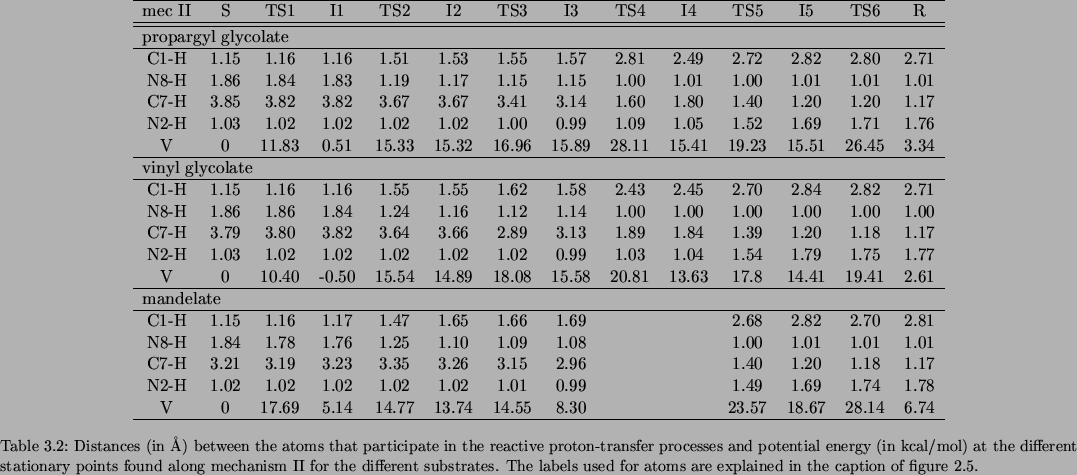| mecIII |
S2 |
TS1 |
I |
TS2 |
R |
| propargyl glycolate |
| C1-H |
1.16 |
1.76 |
|
|
2.71 |
| N8-H |
1.81 |
1.07 |
|
|
1.01 |
| C7-H |
2.95 |
2.06 |
|
|
1.17 |
| N2-H |
1.00 |
1.02 |
|
|
1.76 |
| V |
0.16 |
22.05 |
|
|
3.34 |
| vinyl glycolate |
| C1-H |
1.16 |
2.02 |
2.62 |
2.62 |
2.75 |
| N8-H |
1.81 |
1.03 |
1.01 |
1.01 |
1.01 |
| C7-H |
2.94 |
1.76 |
1.55 |
1.55 |
1.17 |
| N2-H |
0.99 |
1.07 |
1.16 |
1.17 |
1.77 |
| V |
-0.48 |
20.28 |
15.03 |
15.04 |
2.61 |
| mandelate |
| C1-H |
1.16 |
2.10 |
2.69 |
2.74 |
2.81 |
| N8-H |
1.82 |
1.03 |
1.01 |
1.01 |
1.01 |
| C7-H |
2.93 |
1.79 |
1.59 |
1.50 |
1.17 |
| N2-H |
1.00 |
1.06 |
1.13 |
1.22 |
1.78 |
| V |
0.89 |
20.19 |
16.68 |
16.78 |
4.63 |
|
